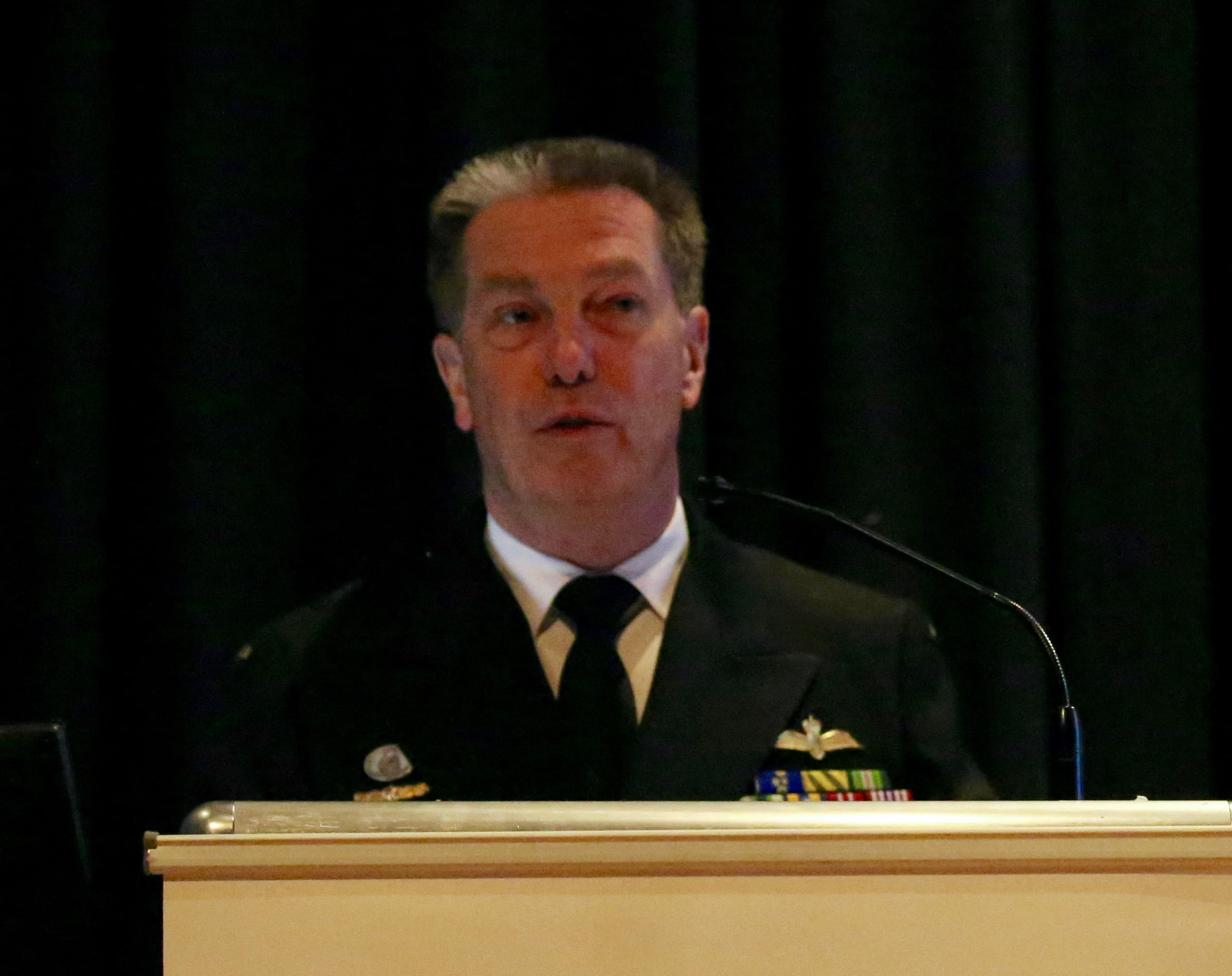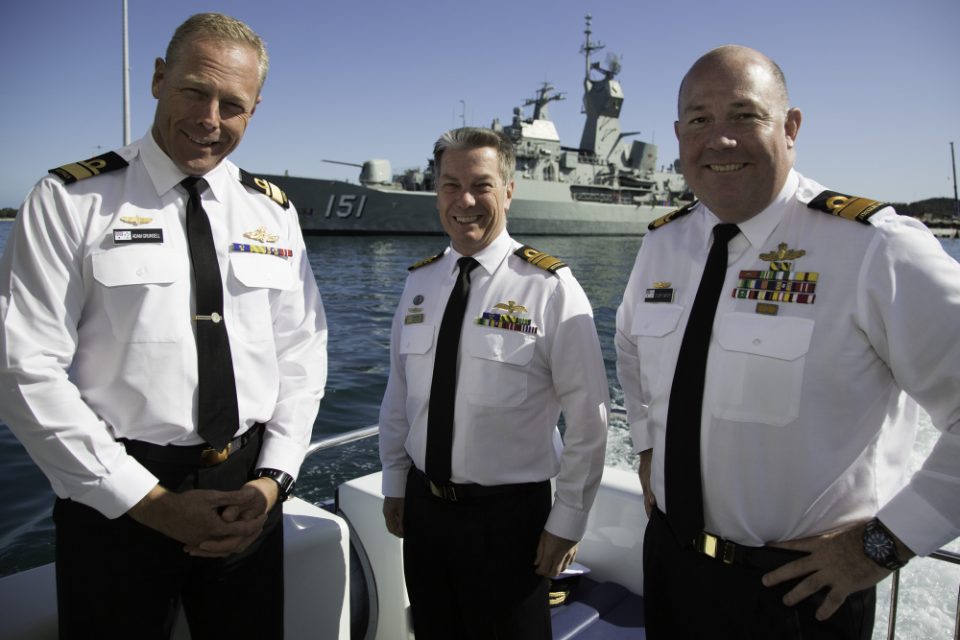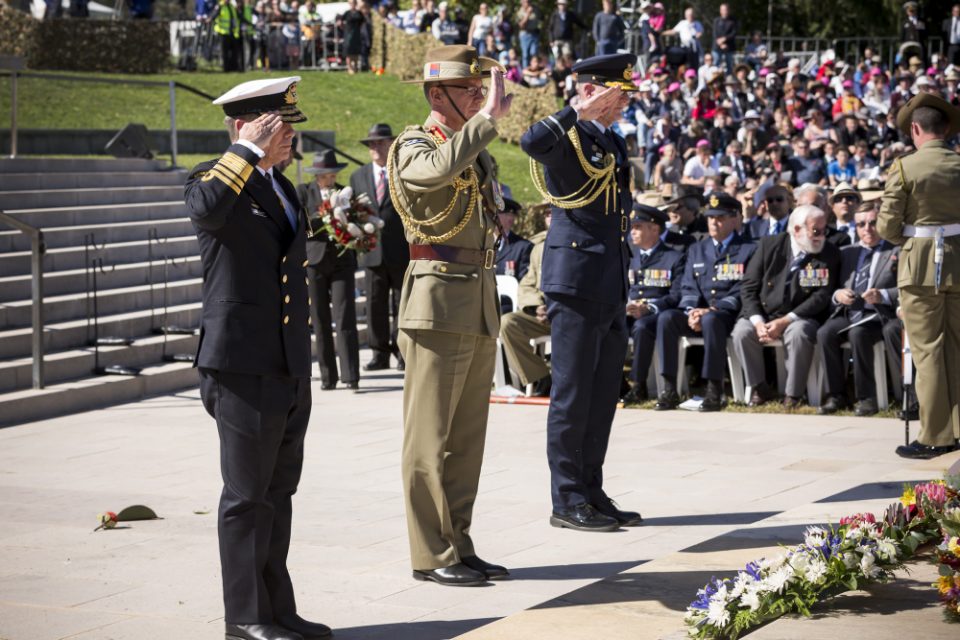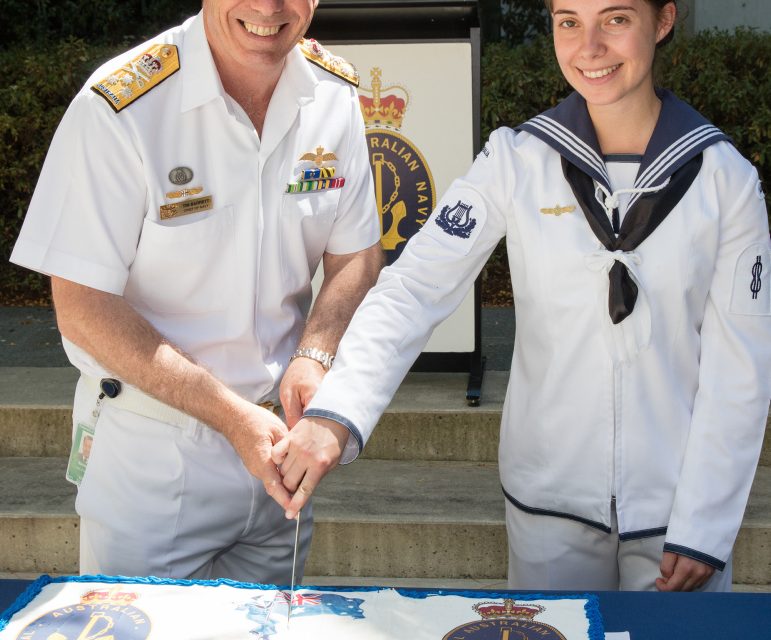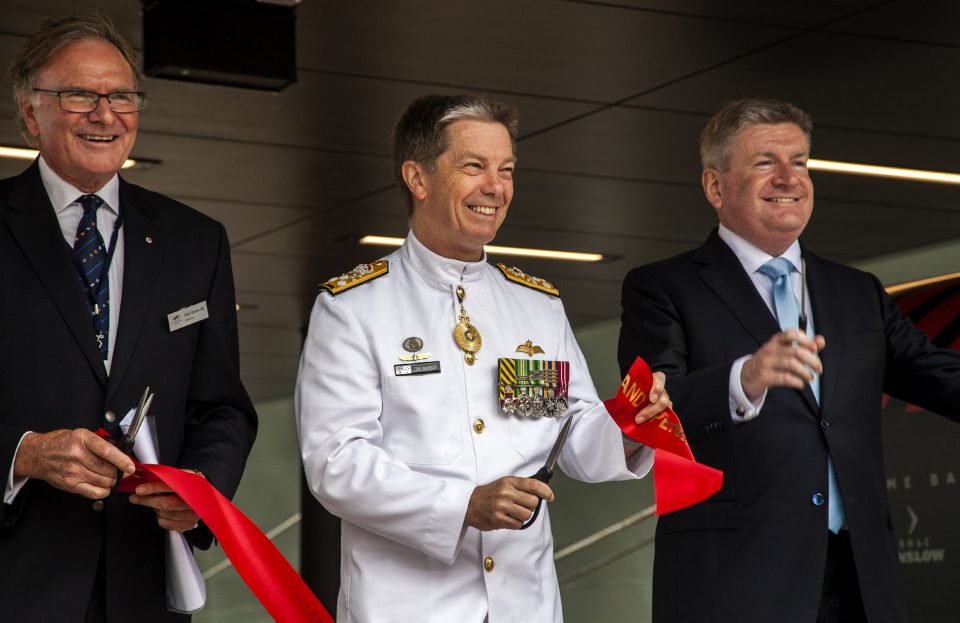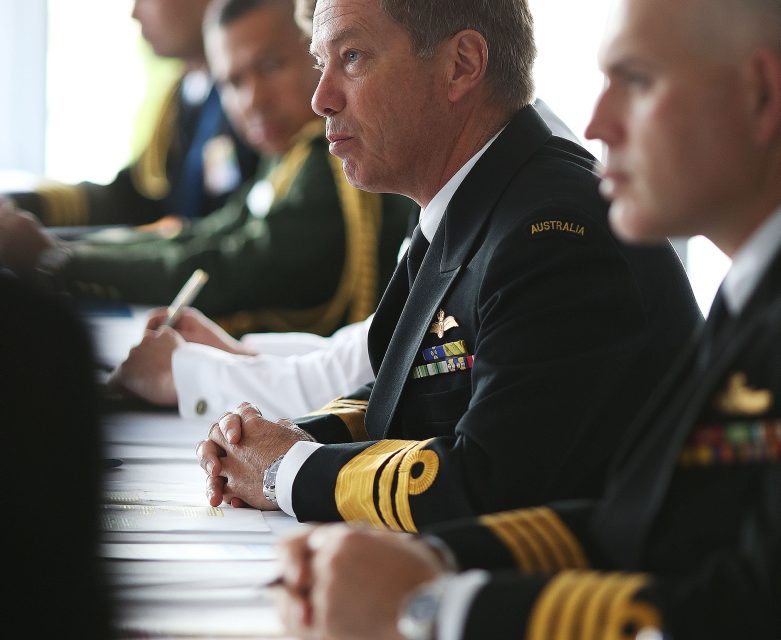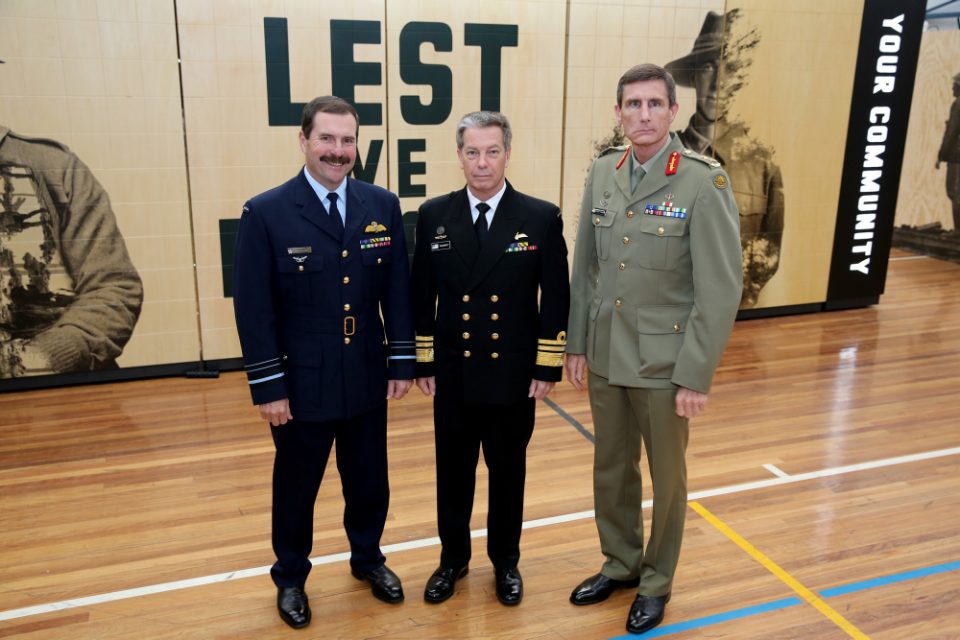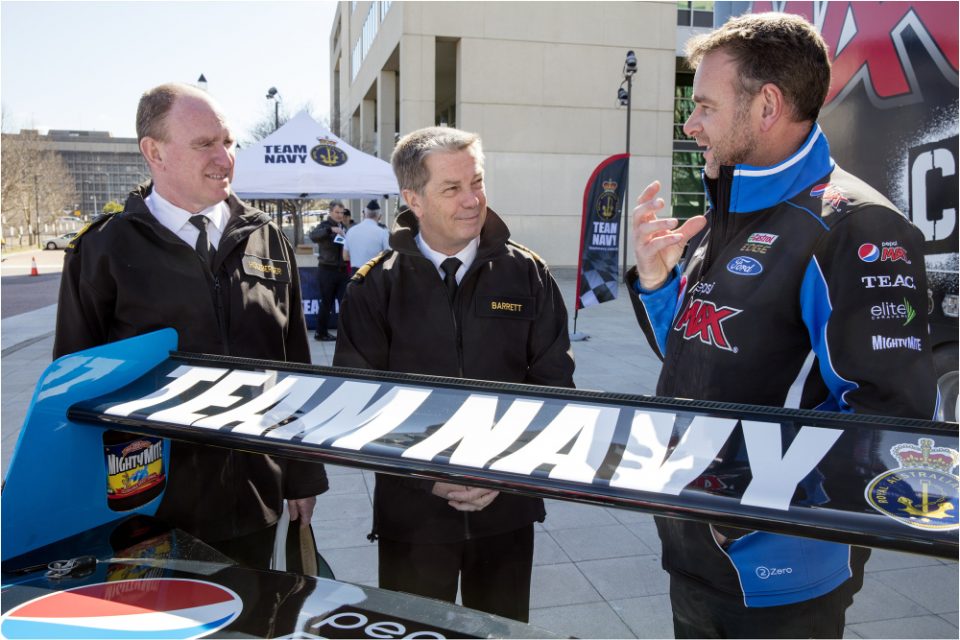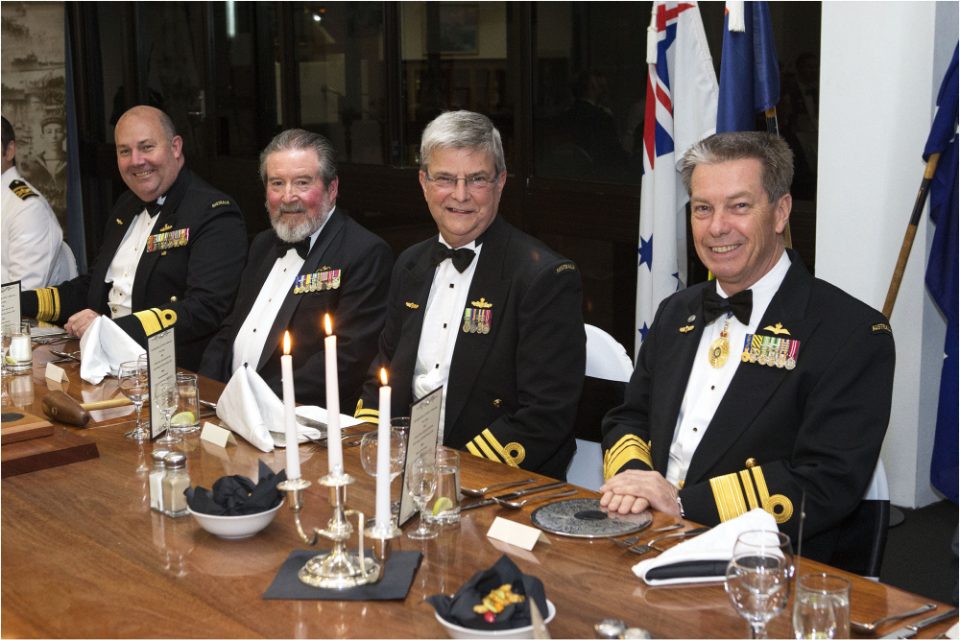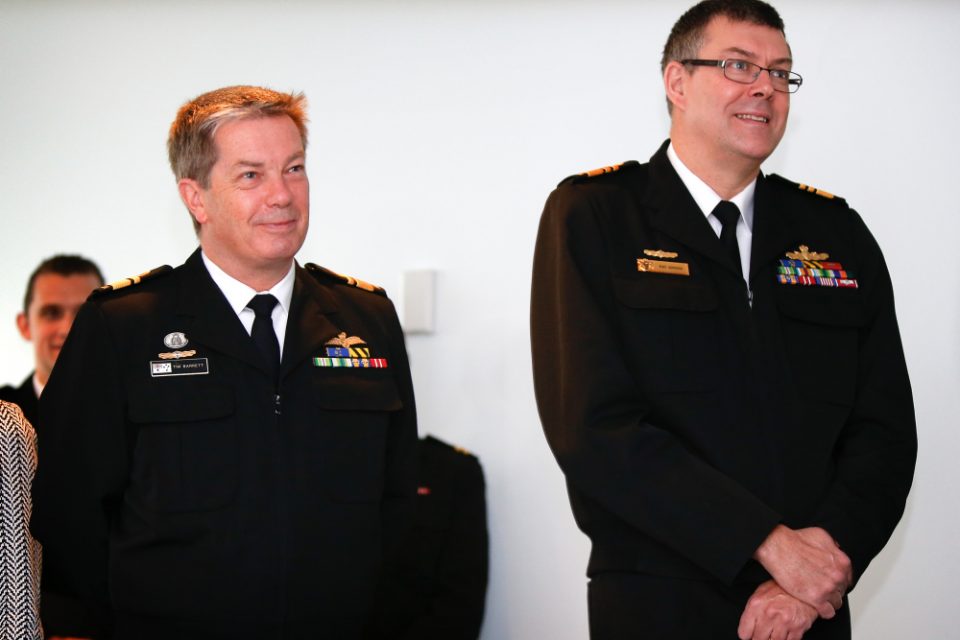2016-09-01 By Robbin Laird
A key speaker at the Williams Foundation seminar on air-land integration was the Chief of the Australian Navy, Vice Admiral Tim Barrett.
Barrett’s speech focused on the opportunities and challenges of the largest recapitalisation of the Australian Navy since World War II.
New submarines, destroyers and amphibious ships and associated fleet assets are being built in Australia to shape a new maritime capability for Australia.
But this force is being built in the time of significant innovation in the Pacific whereby new force concepts are being shaped, such as kill webs, distributed lethality, and fifth generation airpower.
Barrett made it very clear that what was crucial for the Navy was to design from the ground up any new ships to be core participants in the force transformation process underway.
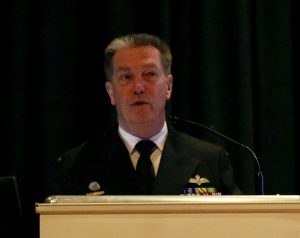
In his presentation at the conference, he underscored that “we are not building an interoperable navy; we are building an integrated force for the Australian Defence Force.”
He drove home the point that ADF integration was crucial in order for the ADF to support government objectives in the region and beyond and to provide for a force capable of decisive lethality.
By so doing, Australia would have a force equally useful in coalition operations in which distributed lethality was the operational objective.
He noted that it is not about massing force in a classic sense; it is about shaping a force, which can maximize the adversary’s vulnerabilities while reducing our own.
And he re-enforced several times in his presentation that this is not about an ‘add-in, after the fact capability’; you need to design and train from the ground up to have a force trained and equipped to be capable of decisive lethality.
He quoted Patton to the effect that you fight war with technology; you win with people.
It is about equipping the right way with right equipment but training effectively to gain a decisive advantage.
The recapitalisation effort was a “watershed opportunity for the Australian Navy.”
But he saw it as a watershed opportunity, not so much in terms of simply building new platforms, but the right ones.
And with regard to the right ones, he had in mind, ships built from the ground up which could be interoperable with JSF, P-8, Growler, Wedgetail and other joint assets.
“We need to achieve the force supremacy inherent in each of these platforms but we can do that only by shaping integrated ways to operate.”
He highlighted that the Navy was in the process of shaping a 21st century task force concept appropriate to a strategy of distributed lethality and operations.
A key element of the new approach is how platforms will interact with one another in distributed strike and defensive operations, such as the ability to cue weapons across a task force.
After his presentation, I had the chance to sit down with Vice Admiral Barrett and to expand the conversation.
Clearly, a key element in his thinking is how to get the new build of ships right for an age in which one wants to build an integrated, but distributed force.
Question: It is clear that you are taking the long view of getting the ship building piece of this right in terms of ensuring that ships are not built simply as separate platforms, but as building blocks in an integrated force.
How do you do that?
Vice Admiral Barrett: “I am taking a very long view, and believe that we need to build our ships in Australia to generate naval capabilities integrated within the ADF.
“We need agility in the process of changing ships through life—continuing to evolve the new ships depending on how the threat is evolving.
“This means that we need to control the combat system software as well as build the hulls. We will change the combat system and the software many times in the life of that ship; whereas, the hull, machinery in the plant doesn’t. That might sound like a statement of the obvious.
“But it’s not a statement that’s readily understood by our industry here in Australia.
“We need to organise ourselves to have an effective parent navy capability.
“We need to manage commonality across the various ship build processes.
“That will not happen if we build someone else’s ship in Australia which is designed to operate in separate classes.
“I don’t want an individual class to be considered in isolation. I want to cross-learn and cross-operate throughout our various classes of ships, and notably with regard to software integration and development.”
Question: Clearly, building a sustainable navy from the outset is crucial to your design effort.
How do you view the challenge of building a more sustainable navy from the outset?
Vice Admiral Barrett: “It is crucial to deterrence. If your ships are not operating at sea they will have little effect.
“For example we have changed our approach to the Collins submarine largely around sustainment and working more openly with industry to achieve much greater at-sea operational tempos.
“We have put in place an enterprise approach, which focuses on availability of submarines; Industry and Navy are working closely together now to achieve that core objective.
“I’ve got industry keenly interested in the results of what the submarines do when they leave port and go on operations. And we’ve had a dramatic turnaround in submarine availability as partnering has improved.
“For me, deterrence, lethality, availability, sustainability, and affordability are highly interrelated for a Navy and its combat performance.
“And clearly as we design new ships, designing in more sustainable systems and ships is crucial.”
Question: Wedgetail shows an interesting model, namely having the combat squadron next door to the Systems Program Office.
This facilitates a good working relationship and enhances software refresh as well.
You have something like this in mind for your ship building approach.
Could you discuss that approach?
Vice Admiral Barrett: “We do and are implementing it in our new Offshore Patrol Vessel program. And with our ‘ship zero’ concept we are looking to integrate the various elements of operations, upgrades, training and maintenance within a common centre and work flow to get greater readiness rates and to enhance an effective modernization process as well.
“We are reworking our relationship with industry because their effectiveness is a key part of the deterrence process. If I have six submarines alongside the wharf because I can’t get them away, they are no longer lethal and they are no longer a deterrent force.
“Again, as an example we have dramatically improved availability by building maintenance towers alongside the submarine—rather than the previous way that it was done, where people arrived into that one gangway under the submarine then dispersed to do their maintenance work—is an example of how we need to work.
Question: In your presentation, you mentioned working with various air systems.
Could you discuss, Navy’s role in Wedgetail?
Vice Admiral Barrett: “We have Navy officers onboard who already provide a key communication role to the Air Force officers onboard the Wedgetail. They can inform those officers of the decision process on the ship and, conversely, explain later to those onboard the ships, what Wedgetail can do for them.
“Put in other terms, by such a work flow, augmented by the growing engagement of Virtual Wedgetail in navy training, Wedgetail becomes part of the maritime warfare system within the ADF.
“Wedgetail is an example of the way ahead for air-naval integration.”
For a biography of Vice Admiral Barrett, see the following:
http://www.navy.gov.au/biography/vice-admiral-tim-barrett
For an overview on the Navy’s transformation plan, Plan Pelorus, see the following:
http://video.defence.gov.au/play/1989#
According to Vice Admiral Barrett in a speech delivered earlier this year, the Chief of Navy provided this overview to the transformation approach:
PELORUS recognises the need for technologically-advanced ships to combine in the modern fleet system, and to integrate seamlessly in the joint and networked environment.
This is a plan which recognises the need for ships to be capable of delivering the lethal force on which deterrence depends. It is a hard-nosed plan; one that recognises the need for ships to be affordable, adaptable and available—and ready to serve the nation’s needs.
But Plan PELORUS looks beyond individual ships. It recognises that in the future, ships will only be entirely capable when they operate in fleet systems.
In the future, the whole will be massively greater than the sum of its parts. PELORUS is also about our people.
They remain what they have always been— the greatest single factor in our success in operations. PELORUS addresses those serving now and those we need to recruit.
http://www.adfjournal.adc.edu.au/UserFiles/issues/199%202016%20Mar_Apr.pdf
The slideshow above shows Vice Admiral Barrett performing some of his various functions. Credit photos: Australian Ministry of Defence.
The photos shown are as follows:
In the first photo, Chief of Navy, Vice Admiral Tim Barrett, AO, CSC, RAN with Rear Admiral Adam Grunsell, AM, CSC, RAN (left) and Fleet Commander, Rear Admiral Stuart Mayer, CSC and Bar, RAN (right) spent three days in the west this week conducting Navy’s day to day business from HMAS Stirling.
In the second photo, Chief of Navy, Vice Admiral Tim Barrett, AO, CSC, Deputy Chief of Army Major General Rick Burr, DSC, AM, MVO and Deputy Chief of Royal Australian Air Force Air Vice-Marshal Warren McDonald, AM, CSC, salute after laying wreaths at the Stone of Remembrance during the 2016 Anzac Day National Ceremony held at the Australian War Memorial in Canberra.
In the third photo, the Royal Austalian Navy celebrated its 115th birthday at Russell Offices with the Chief of Navy, Vice Admiral Tim Barrett cutting the cake with Able Seaman Musician Maria Smith.
In the fourth photo, Chief of Navy, Vice Admiral Tim Barrett, AO, CSC, RAN helps cut the grand opening ribbon at the new ‘Action Stations’ exhibit at the Australian National Maritime Museum, Darling Harbour, Sydney.
In the fifth photo,Chief of Navy, Vice Admiral Tim Barrett, AO, CSC, RAN holds the floor, during the Indian Ocean Naval Symposium (IONS) Conclave of Chiefs. Australia then held the Chairmanship of IONS. The regional forum was held during Sea Power 2015.
In the sixth photo, (Left to right) Chief of Air Force Air Marshal Leo Davies, AO, CSC; Chief of Navy Vice Admiral Tim Barrett, AO, CSC; and Chief of Army Lieutenant General Angus Campbell, DSC, AM, at the opening of The Spirit of Anzac Centenary Experience travelling exhibition in Wodonga, Victoria, in September 2015.
In the seventh photo, Chief of Navy, Vice Admiral Tim Barrett, AO, CSC, RAN and CEO Prodrive Racing Australia Mr Tim Edwards and Warrant Officer of Navy, Warrant Officer Mark Holzberg discuss the upcoming race while in Blamey Square, Canberra.
In the eighth photo, the Chief of Navy, Vice Admiral Tim Barrett, AO, CSC, RAN; HMAS Stirling Executive Officer, Commander Brian Chase, RANR; Commodore Bob Trotter (Rtd) and Commander Australian Fleet, Rear Admiral Stuart Mayer, CSC and Bar, RAN, at the HMAS Stirling 100th Anniversary of Anzac Mess Dinner.
In the final photo, then Commander Australian Fleet, Rear Admiral Tim Barrett (left) and Chief of Navy, Vice Admiral Ray Griggs, at Parliament House, Canberra.
Royal Australian Navy Strategy 2018 from SldInfo.com on Vimeo.


